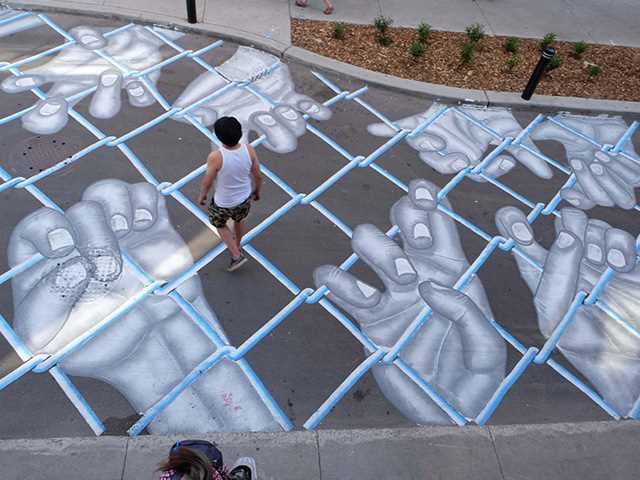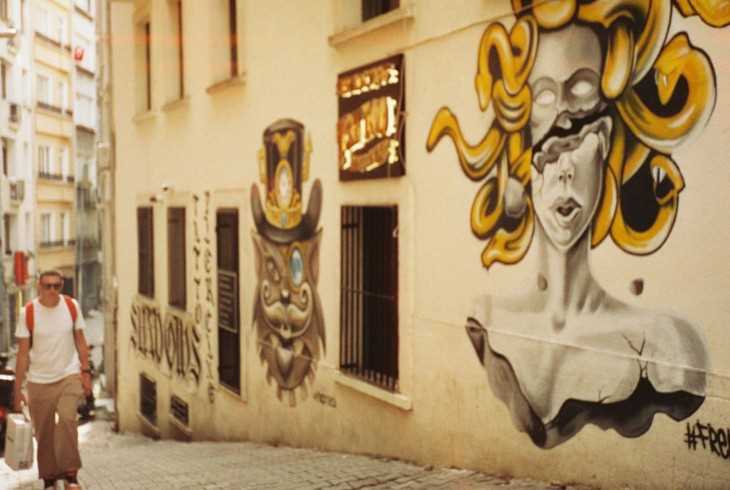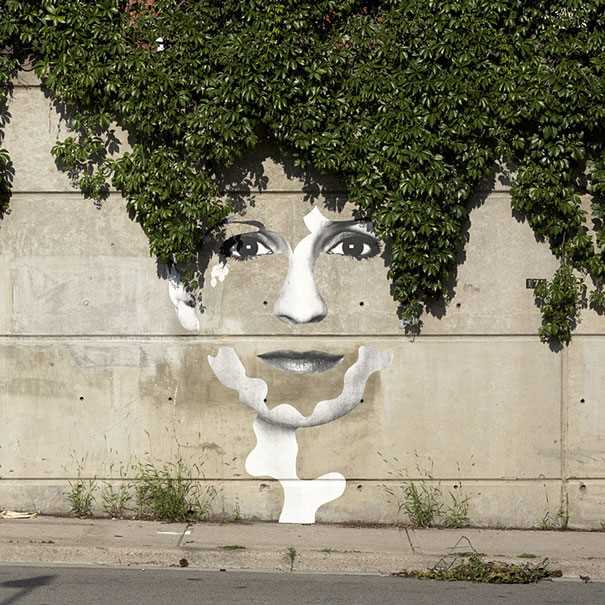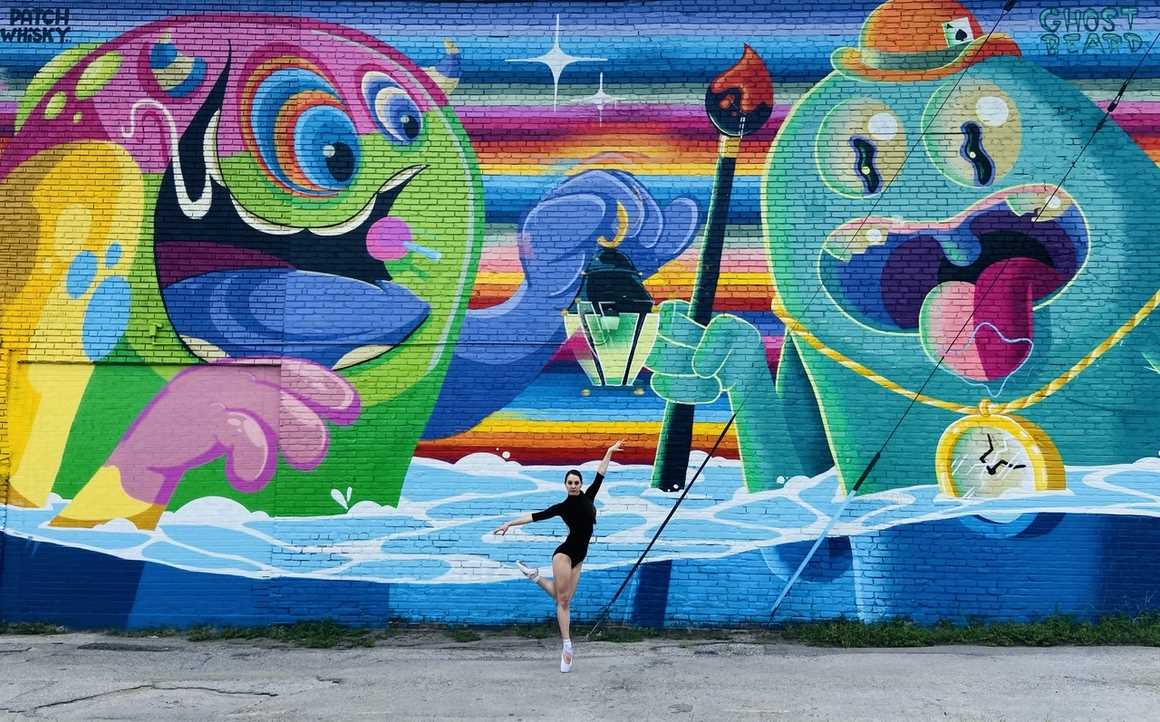
The streets are no longer just gray and dull pathways to get from one point to another. They have become works of art, vibrant and full of life, thanks to the urban mural art movement. Street artists around the world are transforming abandoned walls and buildings into captivating pieces of art, using their creativity to bring color and meaning to the urban landscape.
Urban mural art is more than just painting on walls; it is a form of expression that tells stories, captures emotions, and sparks conversations. These large-scale artworks have the power to transform neighborhoods, turning them into open-air galleries that engage and inspire the local community. They redefine public spaces, challenging the notion of what art can be and where it belongs.
What makes urban mural art so unique is its ability to connect people. It breaks down barriers, bringing art out of the galleries and into the streets where everyone can access and appreciate it. These murals often reflect the identity and culture of the community they are in, celebrating diversity and fostering a sense of pride and belonging.
Moreover, urban mural art has the potential to revitalize neglected areas and rejuvenate communities. By transforming derelict spaces into visually appealing landmarks, street artists can breathe new life into these areas, attracting visitors and investment. The murals often become tourist attractions, drawing both locals and tourists alike, boosting local businesses and making the streets vibrant and alive.
Exploring the Urban Landscape
The urban landscape is a living and breathing entity, constantly evolving and transforming. It’s a vibrant and dynamic space where creativity finds expression through various mediums, including murals.
Walking through the streets of a city, one can’t help but be captivated by the diverse and striking mural art that adorns the walls. These large-scale public artworks have the power to transform once drab and mundane spaces into vibrant and inspiring environments. They bring color, life, and a sense of identity to the urban fabric.
The urban landscape is a canvas where artists can make their mark and communicate their ideas to a wide audience. Murals often reflect the unique character of a city or neighborhood, telling stories of its history, culture, and the people who inhabit it.
Uncovering Hidden Stories
Exploring the urban landscape through mural art allows us to uncover hidden stories that might otherwise go unnoticed. These artworks can shed light on the struggles, triumphs, and aspirations of a community, offering a glimpse into the collective memory and identity of a place.
Through their powerful imagery and symbolism, murals become a visual record of social, political, and cultural movements. They challenge societal norms, spark conversations, and provoke thought. They invite us to contemplate our surroundings and question the narratives that shape our cities.
Transforming Spaces
Mural art has the ability to transform both physical and emotional spaces. It breathes new life into neglected or forgotten areas, revitalizing them and making them destinations worth exploring. Murals can create a sense of pride and ownership among residents, fostering a stronger sense of community and connection.
By embracing the urban landscape as a canvas, artists can make art more accessible, blurring the boundaries between galleries and the streets. Anyone who walks by can enjoy and engage with these public artworks, inviting a sense of wonder and inspiration.
The Rise of Street Art
Street art, once considered a form of vandalism, has rapidly gained recognition as a legitimate art genre over the past few decades. What was once seen as a rebellious act born out of graffiti culture has now evolved into a worldwide phenomenon that is celebrated and embraced in cities around the globe.
A Form of Self-Expression

Street art is a medium through which artists can express their ideas, thoughts, and emotions in a public space. Unlike traditional art forms that are confined to galleries and museums, street art has the power to reach a wider audience and make a statement about social, political, and cultural issues. Artists use the streets as their canvas, creating powerful and thought-provoking pieces that challenge the norm and evoke a reaction from viewers.
Furthermore, street art often reflects the culture and identity of a city. It can capture the spirit of a neighborhood and serve as a visual representation of the community’s values and aspirations. By transforming neglected and rundown areas into vibrant and engaging spaces, street art has the ability to revitalize and rejuvenate urban environments.
A Platform for Diversity
Street art has become a platform for artists from all walks of life to showcase their creativity and talent. It transcends barriers and gives a voice to individuals who may not have traditional avenues to express themselves. From renowned artists to local talents, street art provides an accessible and inclusive platform where everyone has the opportunity to contribute to the cultural landscape of a city.
The rise of street art has also fostered a sense of community and collaboration among artists. Walls and buildings are no longer seen as limitations, but rather as opportunities for collaboration and creative expression. Artists often work together to transform entire streets into outdoor galleries, creating cohesive and visually striking artworks that tell a collective story.
Public Art as Visual Storytelling
Public art has long been a powerful means of storytelling, transforming ordinary streets into vibrant spaces filled with creativity and imagination. The use of murals and other art forms in urban spaces allows artists to communicate their messages and narratives in a visually compelling way.
Creating a Sense of Place
Public art serves as a visual narrative that adds to the overall identity of a place. Murals, in particular, have the ability to capture the essence of a community and reflect its history, culture, and aspirations. These large-scale artworks often depict scenes from local folklore, historical events, or significant individuals who have shaped the area.
By having public art that tells stories, a sense of belonging and pride can be fostered among the community members. It brings people together and encourages them to engage with their surroundings at a deeper level by understanding the stories behind the artwork.
Conveying Social and Political Messages
Public art also serves as a platform for artists to express their views on various social and political issues. Through their artwork, they can challenge norms, raise awareness, and initiate important conversations within the community.
Murals often address topics such as equality, climate change, human rights, and social justice. They serve as a visual voice for underrepresented groups and allow these stories to be shared in a public space, making them accessible to a wider audience.
Furthermore, public art can also generate a sense of empowerment among the community as it provides a platform for marginalized voices to be heard and represented.
Engaging and Inspiring the Community

Public art has the power to engage and inspire the community by creating a visually stimulating environment. Murals, sculptures, and other art installations not only enhance the aesthetic appeal of streets and buildings but also create a sense of wonder and curiosity among passersby.
By sparking interest and conversation, public art encourages people to explore their surroundings and develop a deeper connection with their community.
Moreover, public art can also serve as a tool for education, allowing viewers to learn about local history, cultural traditions, and diverse perspectives.
Fostering Community Engagement

In addition to their aesthetic appeal, urban murals also serve as a powerful tool for fostering community engagement. These large-scale artworks have the ability to bring people together, evoke emotions, and spark conversations.
Through the creation of urban murals, artists are able to capture the essence of a community and reflect its values, history, and aspirations. The process of creating a mural often involves collaboration between artists, community members, and local organizations. This collaborative approach allows for the input and participation of various stakeholders, ensuring that the artwork truly represents the community it is located in.
Urban murals have the unique ability to transcend language and cultural barriers, as they can be enjoyed and understood by people of all backgrounds. They serve as a visual language that can convey powerful messages and narratives, making them a powerful tool for promoting social change and addressing important issues.
Engaging Youth
One of the key benefits of urban murals is their ability to engage and inspire the younger generation. By involving young people in the creation of murals, communities can provide them with a meaningful and creative outlet for self-expression. This involvement empowers youth and helps them to develop a sense of ownership and pride in their community.
Engaging youth in mural projects also helps them to develop valuable skills, such as collaboration, communication, and problem-solving. It provides them with an opportunity to learn from professional artists and gain exposure to the world of art and creativity. This can be particularly impactful for young people from disadvantaged backgrounds, who may not have easy access to art education or resources.
Building Social Connections

Urban murals have the power to bring people together and strengthen social connections within a community. They create a sense of place and identity, fostering a shared sense of pride and belonging. When people come together to create or appreciate urban murals, they are able to connect with each other and build relationships.
The presence of urban murals in a neighborhood can also attract visitors and tourists, further promoting social interactions and boosting local businesses. Murals can become iconic landmarks and gathering places, attracting people from different areas and backgrounds.
Mural Art Experiences Beyond Galleries
In the world of art, galleries have long been a traditional space for showcasing and appreciating artworks. However, in recent years, mural art has gained significant popularity as a way of transforming the streets into vibrant displays of creativity. These large-scale artworks not only add beauty to urban environments but also have the power to engage and inspire the communities they are a part of.
What distinguishes mural art from traditional art forms is its accessibility. Unlike paintings and sculptures confined within gallery walls, murals are open to the public, free to enjoy and interact with. They can be found on the sides of buildings, walls, bridges, and other public spaces, bringing art directly to the streets. Through their sheer size and bold colors, murals captivate passersby and create a sense of wonder and discovery.
Mural art offers a unique and immersive experience for viewers. Instead of observing art from a distance like in a gallery, people can physically stand next to and even touch murals. This close proximity allows for a deeper connection with the artwork, inviting viewers to become a part of the narrative and explore the details and textures up close.
Furthermore, mural art goes beyond its visual impact and serves as a tool for storytelling and cultural expression. Many murals convey powerful messages, reflecting the history, values, and identities of the communities they adorn. They can address social issues, promote inclusivity, celebrate diversity, or simply brighten up a neighborhood.
Another aspect that sets mural art apart is its collaborative nature. Unlike a traditional gallery where artists work individually, mural art often involves a team of creators working together. This collaborative process not only brings artists together but also fosters community involvement. Murals are frequently created in partnership with local organizations, schools, or residents, encouraging a sense of ownership and pride in the area.
Expressive and Impactful Designs

Urban murals have become a powerful tool for artists to express themselves and make a lasting impact on the streets. These large-scale paintings not only beautify empty walls but also convey powerful messages, spark conversations, and create a sense of identity within communities.
The designs created by mural artists often reflect the current social and political climate, addressing issues such as inequality, racism, environmental degradation, and more. These designs challenge viewers to think critically, question the status quo, and imagine possibilities for a better, more inclusive future.
Through their use of vivid colors, intricate patterns, and bold imagery, mural artists capture the attention of passersby and draw them into a dialogue with the artwork. The scale and visibility of these designs also contribute to their impact, as they can be seen from a distance and become landmarks within a cityscape.
Furthermore, mural art has the power to transform neglected or rundown neighborhoods into vibrant and inviting spaces. By covering up graffiti, decay, or simply empty walls, murals breathe new life into urban environments. They create a sense of pride and ownership among residents, who feel connected to the art and their surroundings.
The collaborative nature of mural art also plays a significant role in its impact. Many murals are created through community projects, involving local residents, business owners, and even schoolchildren. This inclusiveness fosters a sense of unity and strengthens the social fabric of a neighborhood.
| Expressive | Impactful |
|---|---|
| Murals serve as a medium for artists to express their thoughts, emotions, and ideas without limitations. | By addressing important social issues, murals can raise awareness, promote empathy, and inspire action. |
| Mural designs often incorporate a variety of artistic styles and techniques, showcasing the versatility and creativity of the artists. | The visual impact of large-scale murals, combined with their visibility, ensures a broad audience and lasting impression. |
| Through their use of vibrant colors and eye-catching imagery, murals have the power to evoke strong emotions and provoke thought. | Murals have the potential to create a sense of place, pride, and identity, transforming the perception and reputation of a neighborhood. |

I am a mural enthusiast and a fervent admirer of street art. Rather than creating murals myself, I am passionate about collecting them. My love for street art knows no bounds. I am dedicated to curating and cherishing these artworks that grace the streets. My collection stands as a testament to my profound appreciation for this form of artistic expression.
read about me



